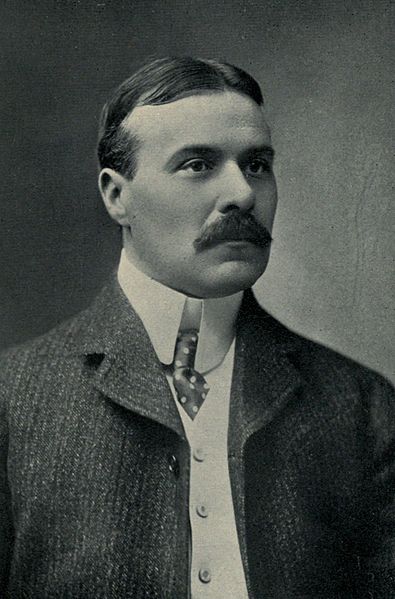<Back to Index>
- Botanist Sébastien Vaillant, 1669
- Writer Robert William Chambers, 1865
- Minister of War and Minister of Education General Sadao Araki, 1877
PAGE SPONSOR

Robert William Chambers (May 26, 1865 – December 16, 1933) was an American artist and writer.
He was born in Brooklyn, New York, to William P. Chambers (1827 - 1911), a famous lawyer, and Caroline Chambers (née Boughton), a direct descendant of Roger Williams, the founder of Providence, Rhode Island. Robert's brother was Walter Boughton Chambers, the world famous architect.
Robert was first educated at the Brooklyn Polytechnic Institute, and then entered the Art Students' League at around the age of twenty, where the artist Charles Dana Gibson was his fellow student. Chambers studied at the École des Beaux-Arts, and at Académie Julian, in Paris from 1886 to 1893, and his work was displayed at the Salon as early as 1889. On his return to New York, he succeeded in selling his illustrations to Life, Truth, and Vogue magazines. Then, for reasons unclear, he devoted his time to writing, producing his first novel, In the Quarter (written in 1887 in Munich). His most famous, and perhaps most meritorious, effort is The King in Yellow, a collection of weird short stories, connected by the theme of the fictitious drama The King in Yellow, which drives those who read it insane. E.F. Bleiler described The King in Yellow as one of the most important works of American supernatural fiction.
Chambers returned to the weird genre in his later short story collections The Maker of Moons and The Tree of Heaven, but neither earned him such success as The King in Yellow. Some of Chambers' work contains elements of science fiction, such as In Search of the Unknown and Police!!!, about a zoologist who encounters monsters.
Chambers later turned to writing romantic fiction to earn a living. According to some estimates, Chambers was one of the most successful literary careers of his period, his later novels selling well and a handful achieving best seller status. Many of his works were also serialized in magazines.
After 1924 he devoted himself solely to writing historical fiction.
Chambers for several years made Broadalbin, New York, his summer home. Some of his novels touch upon colonial life in Broadalbin and Johnstown.
On July 12, 1898, he married Elsa Vaughn Moller (1882 - 1939). They had a son, Robert Edward Stuart Chambers (later calling himself Robert Husted Chambers) who also gained some fame as an author.
Chambers died at his home in Broadalbin on December 16, 1933. H. P. Lovecraft said of Chambers in a letter to Clark Ashton Smith, Frederic Taber Cooper commented, A critical essay on Chambers' horror and fantasy work appears in S.T. Joshi's book The Evolution of the Weird Tale (2004).